I’ve always been fascinated by fermentation in its many forms, from the souring of cabbage in sauerkraut to the souring of grains in a whole-grain feed made for chickens. The sourness happens through the proliferation of Lactobacilli in your food, and simply by letting this good bacteria accumulate over a few days or a few weeks, you (and your gut) will get all the benefits of these natural (and delicious) probiotics.
Long a fan of Japanese rice bran pickles, or nukazuke, I’ve wanted to make my own at home but knew that the art of fermenting food in nukadoko (a fermented bed of rice bran) required a long-term commitment in the kitchen.
While making homemade nukazuke is fast and easy compared to, say, sauerkraut, inoculating the nukadoko does take more than a few steps the first week, and then an everyday routine to keep your bed flourishing with beneficial bacteria. From the first day you mix your own nukadoko, it needs daily stirring by hand to aerate the rice bran and keep the microbes in check.
Yes, every day. By hand. And in summer, sometimes twice a day.
If you spend a lot of time in the kitchen and your nukadoko lives in a spot where you see it every day, stirring takes no more than 20 seconds. Nukadoko thrives on the bacteria that naturally lives on your hands, the same bacteria that can turn a baby cucumber into a crisp, piquant pickle overnight or a handful of spring radishes into refreshing, tart little crudités in just a couple of hours.
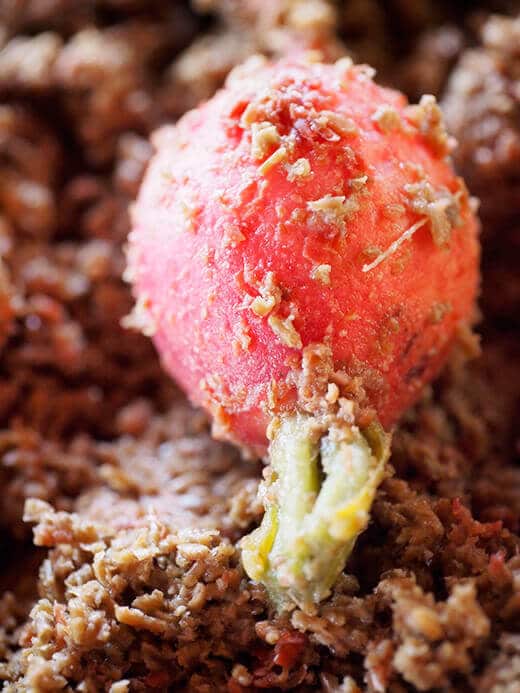
Every nukadoko tastes a little different depending on the aromatics you add in your bed, the vegetables you ferment and even the “flavor” of the bacteria on your hands. Aged nukadoko will taste smoother and more refined than a young one, the way a bottle of wine will mature over time. Japanese families often pass down their nukadoko to new generations of picklers, and it’s not uncommon for an heirloom bed to be 50 years old or more!
Nukadoko can also be divided to start new beds, and a cup of fermented rice bran can be mixed in to a new bed to jumpstart a friend’s nukadoko (similar to sourdough starter). For a fermentation fan, aged nukadoko makes a great gift!
A stroll through a Japanese market will turn up many ready-made nukadoko kits. Some will simply be bags of inoculated rice bran, just add water. Others will even come with plastic containers to do all your mixing and fermenting in.
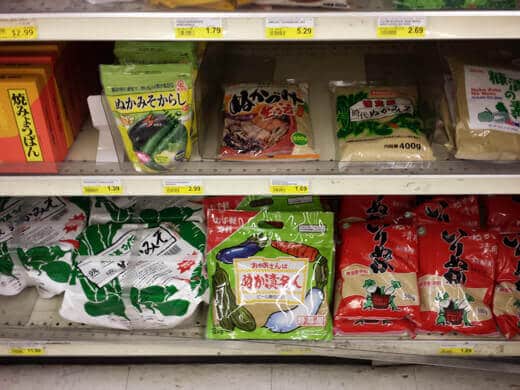
But to fully understand and appreciate the art of nukadoko, making your own from scratch is a deeply satisfying meditation.
Sourcing the Rice Bran
Traditionally, nukadoko is made with rice bran, the vitamin-rich outer layer that surrounds the germ of whole-grain brown rice. It’s a byproduct of milling in the production of refined grains. Nuka is Japanese for rice bran, so nukadoko is a pickling bed made from rice bran.
While it’s easy to find in a Japanese market, rice bran is not so common in most American markets. Bob’s Red Mill sells it, as do other health food brands, but you can substitute wheat bran if you’re having trouble sourcing rice bran. (And in fact, the nukadoko in this post was made entirely with wheat bran, as I found it in bulk for only 99¢ per pound.)
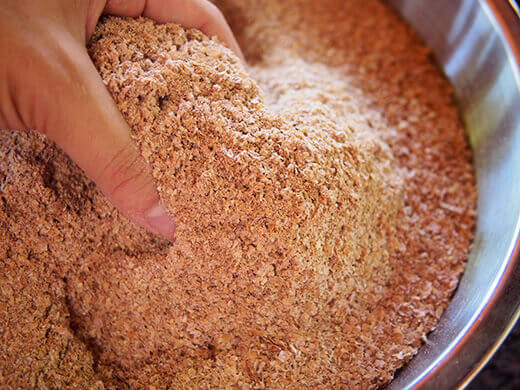
Flavor-wise, fermented rice bran and fermented wheat bran are very similar. I’ve made both, and the only differences I could detect were the aromatics used in each bed. The true difference lies in the texture. Rice bran has a relatively high fat content, making it denser and heavier than high-volume, fluffy wheat bran. Rice bran looks like a coarse, buff-colored powder, whereas wheat bran looks like fine, flat, reddish flakes.
When it comes to making nukadoko, that means rice bran will require less water to make a mash; it’s also more susceptible to turning watery (since it doesn’t absorb as much water as wheat bran does) and turning sour if it’s severely compacted in your container. Wheat bran, on the other hand, has so much volume that it needs to be tightly compressed in order for the bacteria to contact the vegetables and produce good pickles.
Whichever bran you decide to use, the basic principles of nukadoko apply to both.
Preparing the Rice Bran
The three essential ingredients are bran, salt, and water. In my own bed, I add bread to feed the bacteria and speed up fermentation, garlic and ginger to amp up the flavor, dashi kombu (dried seaweed) to add umami and depth, and chile peppers to repel pantry bugs. If you want a little sweetness, you can also add dried apple peels or dried persimmon peels; more flavor, add dried shiitake mushrooms.
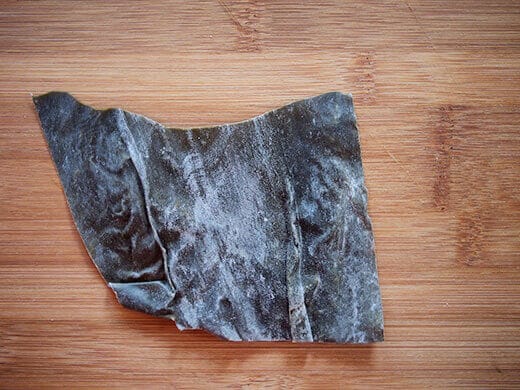
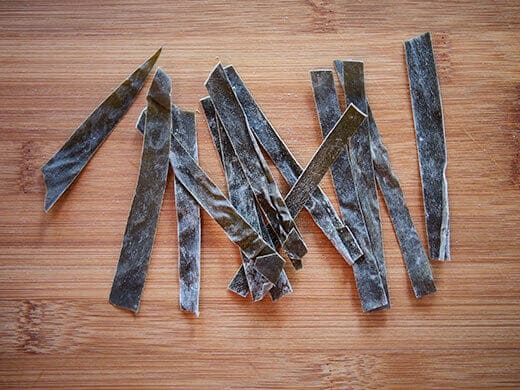
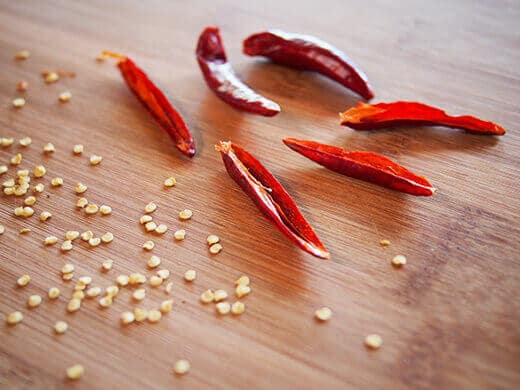
Salt should be 13 percent of the weight of the bran. In very warm climates, you can go up to 15 percent salt by weight to slow down fermentation (and keep your nukadoko from turning sour). Use a salt without any additives; sea salt, kosher salt, and pickling salt are good choices.
Always use filtered water, as the chlorine in tap water can interfere with the bacteria. When you mix the water, salt, and bran together, the resulting mash is called nukadoko (or nukamiso). It serves as a medium for the microbes and a warm bed in which to bury the vegetables, and should look and feel like damp sand.
The nukadoko should smell earthy and nutty (like fresh bread) and even a little sweet; it should never smell rotten. Because it’s a live and active colony that’s constantly changing, you may find that your pickles taste differently in summer than they do in winter, or even day to day in a highly aromatic bed.
Begin the fermentation by priming the bed with starter vegetables, which can be anything from kitchen scraps to small chunks of vegetables (a wedge of cabbage, a few carrot sticks or some slices of daikon are traditionally used). The bacteria that live on the skins of these vegetables help colonize your bed with the Lactobacilli that make nukazuke so tasty.
Making Nukazuke
Once your bed is properly fermented, you can begin making your own probiotic-filled pickles in mere hours.
Some Japanese sources say to lightly salt your vegetables before putting them to bed as it assists in fermentation; I’ve tried it both ways, salted and unsalted, and haven’t yet found a difference in texture or taste (though that may also depend on the vegetables used).
To make nukazuke, bury your vegetables deep in the nukadoko, then flatten the surface with your hands. You want the nuka tightly compressed to allow the bacteria ample contact with the vegetables, but not too compressed where the bed starts to suffocate. In general, I gently pat down a rice bran bed but really pack down a wheat bran bed for faster, uniform pickling.
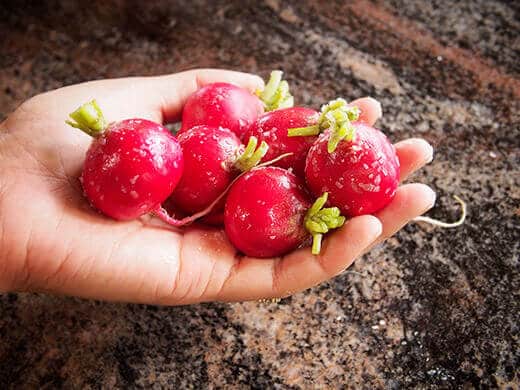

Smaller vegetables take less time to ferment while larger vegetables take more time. My favorite nukazuke at the moment are baby Persian cucumbers, which I pickle whole. I also love spring radishes (left whole) and daikon (thickly sliced). Other vegetables you can ferment are cabbage, carrots, turnips, kohlrabi, green beans, eggplant, asparagus, brussels sprouts, broccoli, cauliflower, and even baby ginger. Use your best judgment when deciding whether to leave them whole, halved, sliced, or cubed, based on how warm your room temperature is and how quickly you want your pickles.
When you remove the vegetables from the nukadoko, brush off as much nuka as you can (back into the container) and rinse the vegetables with water. Serve immediately, or refrigerate in a covered container. You’ll want to eat the nukazuke as soon as possible after washing for the freshest flavor. They should be limp but crunchy, slightly salty and delightfully tangy with a mild, earthy aftertaste.
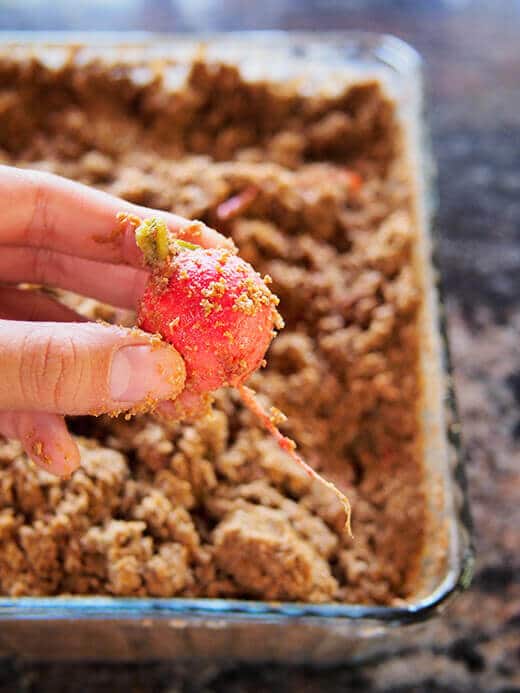
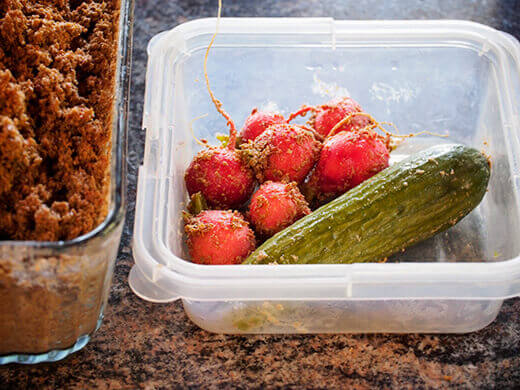
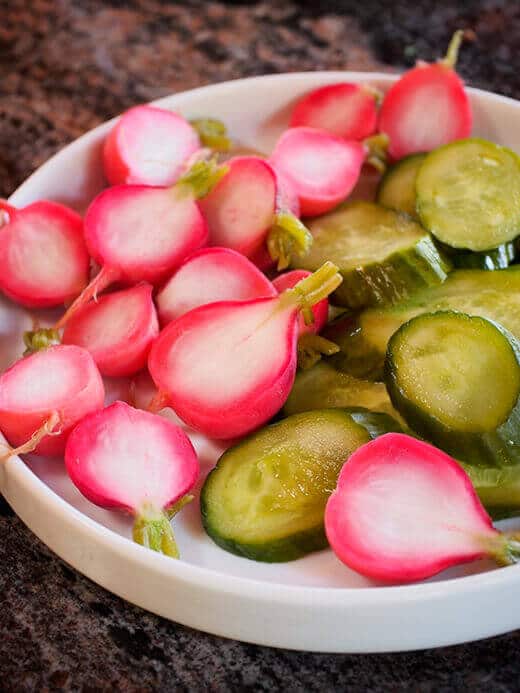
If you’re not adding more vegetables to the nukadoko right away, simply wipe any stray nuka off the walls with your fingers and flatten the surface until you’re ready to ferment again.
Taking Care of Your Nukadoko
My friends and I like to joke about my “nukadoko baby,” as once you get one going, it really is like your child, requiring daily care and attention.
You can store it in any size container that’s food safe. Large, lidded plastic tubs are commonly found in Japanese markets, but some people also use ceramic pickling crocks or standard stock pots. If you can find them in Japantown, traditional (and beautiful) cedar tubs made for nukadoko would be a lovely addition to your collection of fermentation vessels. I use this glass baking dish, as it fits the amount of nuka in this recipe perfectly.
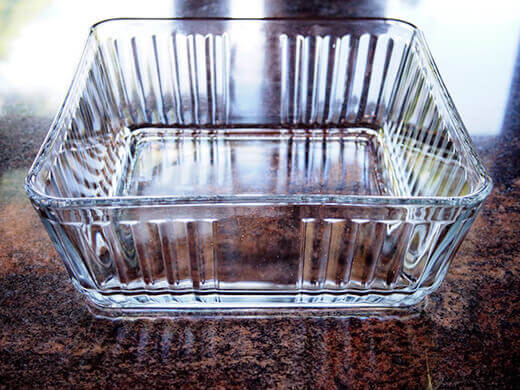
The kitchen is the most logical place to keep your nukadoko, as you probably spend some time in it every day. But as long as the container sits out of direct sunlight, and you remember to stir it up, you can store it on any shelf, counter, or cupboard.
Always use clean hands (sans lotions or creams) to turn the bran over. You can also use clean utensils to stir it up, especially if you’re in a hurry, but the bacteria level will remain most favorable and flavorful with the good germs from your skin. Giving the bran a little love with your hands at least a few times a week will keep it alive and healthy, as does burying a few vegetables (even if they’re just throwaway vegetables) when you’re not in the mood for pickles. I rarely leave my nukadoko empty for more than three days at a time.
Since the nukadoko needs daily maintenance, there may be times when you’re traveling and you can’t take it with you. Wait — take it with you?
Yes! If I’m car camping or road tripping, the nukadoko comes with. It’s been across the border with me to my bungalow at the Boat Ranch, it’s made its way up north during visits with family and getaways along the coast when we camp. While this might sound bizarre, I can tell you there’s no better treat when you’re away from home than a crunchy little pickle made from the part of home that was able to travel with you. And sinking a few kirby cukes into your nuka overnight for lunch the next day is an outright camping luxury.
When you can’t take it with you, leave your nukadoko with a trusted friend who will commit to stirring it up every day for you.
If no one can take on the task, you can put your nukadoko in deep storage in the refrigerator (though I don’t recommend doing this frequently, as it may affect the quality and flavor of your bed). First, remove all the vegetables (you can leave in the aromatics). Cover the surface of the nukadoko completely with a quarter-inch layer of yellow mustard powder, a quarter-inch layer of salt, then throw a tea towel or thin cloth over the container and refrigerate.
When you retrieve the nukadoko days or weeks later, scrape off the layers of mustard and salt and restart your bed as you did in the beginning, by priming the nuka with a few starter vegetables. It should only take a week or so to revive your bed. In cooler weather where fermentation happens more slowly, you can reinvigorate the bacteria by also adding a handful of fresh bread crumbs to the nuka.
Troubleshooting the Nukadoko
Good upkeep makes for a nukadoko that will last for years and years — possibly to even hand down to your children! But differences in time of year, temperature, and vegetables can occasionally send your nuka for a loop. If…
Your fermented vegetables taste too salty, or not sour enough. If you just started your nukadoko, it likely hasn’t matured enough to produce proper pickles. Sometimes the process can take longer than two weeks if your ambient room temperature is very cool, so keep priming the bed until the vegetables start to turn pleasantly sour. Young nukadoko will generally ferment larger vegetables (like whole cucumbers) in two or three days; once it gets going after a month or so, it can take as little as six hours.
The amount of nuka in the container has significantly decreased. Every time you stir up the nuka or remove vegetables from the bed, you end up taking a little bit of the nuka away. Eventually, you’ll want to refill the bed back to its normal level. Use 13 percent salt by weight of the bran, and add filtered water as needed to maintain the proper consistency. If needed, remove some of the old nuka to make room for the new nuka.
White mold is growing on the surface. If you forget to stir the nukadoko for a few days, you might see a white mold start to form on the surface. Simply skim it off, add a few spoonfuls of yellow mustard powder, and start stirring up the bed at least twice a day for several days. With proper aeration, the bacteria in the bed should regain their balance. If mold is forming below the surface, throw out the nuka and start a fresh batch.
A heat spell is expected. Fermentation happens faster in warmer temperatures, but sometimes too-hot temperatures will turn your bed sour. If the weather is hotter than usual, add a couple spoonfuls of salt to the nuka to slow down fermentation, and stir it up at least twice a day to provide ample aeration. Be careful with adding too much salt, as it can affect the flavor of your nuka and inhibit bacterial activity in your bed.
Your nukadoko turns very watery. Vegetables with higher water content can expel a lot of water in the nukadoko. Simply soak up the excess water with a wadded-up paper towel before you add new vegetables. You never want to leave the nuka wet for too long, as it can suffocate and turn sour. If it looks like the nukadoko stays continually wet, you can add more bran and salt until the texture resembles damp sand again.
Your nukadoko smells like alcohol. When bacterial levels get out of balance, the result is a nukadoko that “turns” — in other words, it smells alcoholic or very sour. Even though the nukadoko turns your vegetables sour, the nuka itself should never smell sour. When this happens, a quick fix is to stir in a few spoonfuls of yellow mustard powder, which neutralizes the acidity. Turn over the nukadoko at least twice a day until it starts to smell normal again (a little earthy, nutty, yeasty). If needed, add a little more mustard powder on the third day if the smell hasn’t started to dissipate. But if you add too much mustard powder, that will affect the flavor of the nuka. Generally, the batch can’t be saved if it continues to reek after a week.
Nukadoko (Fermented Rice Bran Bed)
Ingredients
3 cups filtered water, plus more for mixing
3 1/4 ounces sea salt
24 ounces rice bran
1 bread slice
4 garlic cloves
2-inch piece ginger
4-inch square dashi kombu (dried kelp), cut into thin strips
4 dried red chile peppers, split in half and seeds discarded
Assorted starter vegetables
Method
In a medium saucepan over medium-high heat, combine the water and salt. Stir until the salt is dissolved and remove from heat. Let cool to room temperature before using.
In a large wok or saute pan over medium-low heat, lightly toast the bran until fragrant. Stir it around frequently to prevent the bran from browning or burning. The actual cooking time will vary based on your stove or the size of your pan, but for me, it takes about 10 minutes for the bran to fully heat through and smell sightly nutty. Remove from heat and let cool to the touch. The bran should feel dry and powdery.
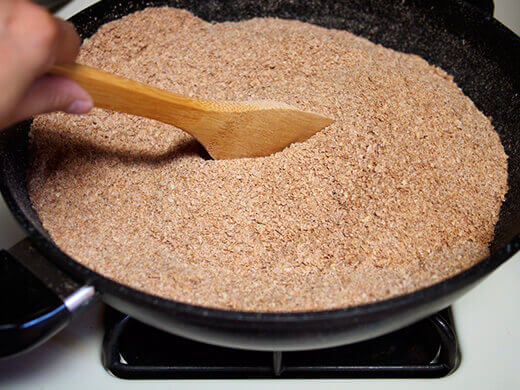
Add the bran to a large container or crock and pour in the brine. Mix well using your hands until all of the brine is incorporated. Mix in more filtered water as needed until the nukadoko resembles damp sand (not too dry and not too watery).
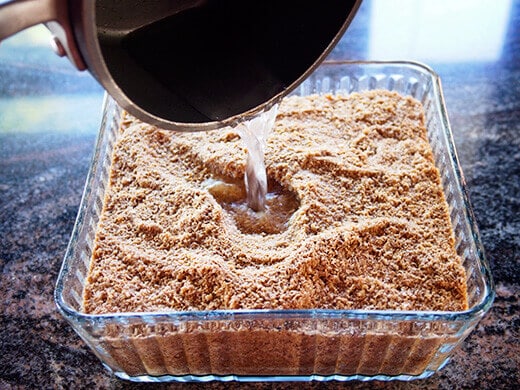
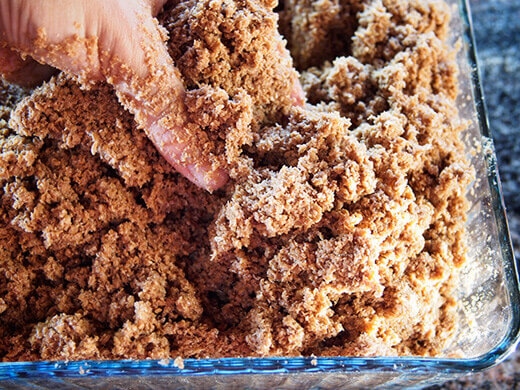
Add the bread, garlic, and ginger to a food processor and pulse until finely crumbled and combined. (If you don’t have a food processor, you can mince them by hand.)
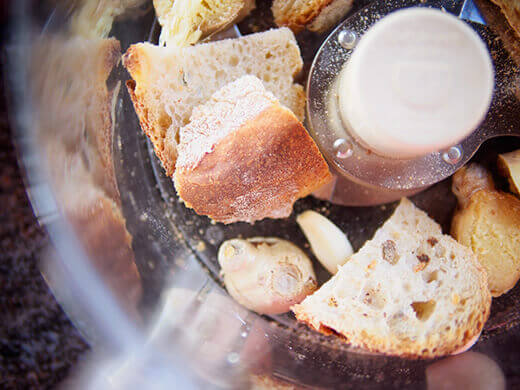
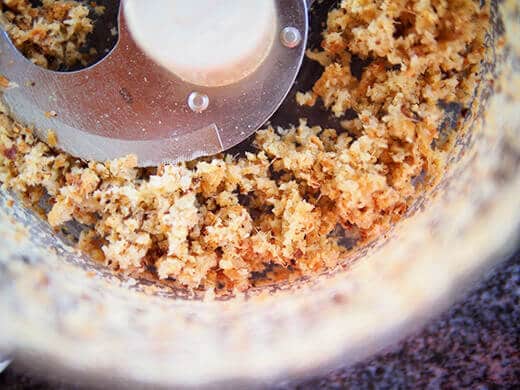
Fold in the bread crumbs, garlic, ginger, kombu, and chiles, then bury a few vegetables in the nukadoko and flatten the surface with your hands. The bran should be neatly compressed.
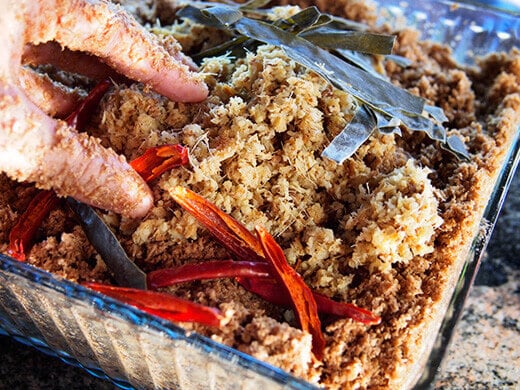
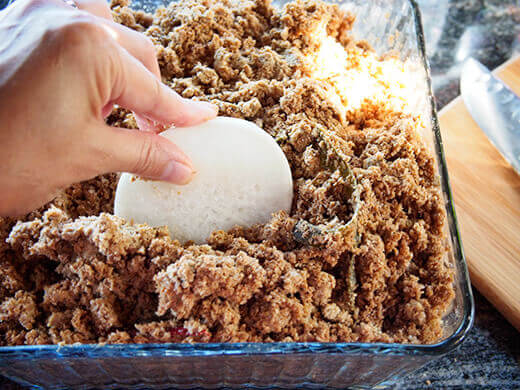
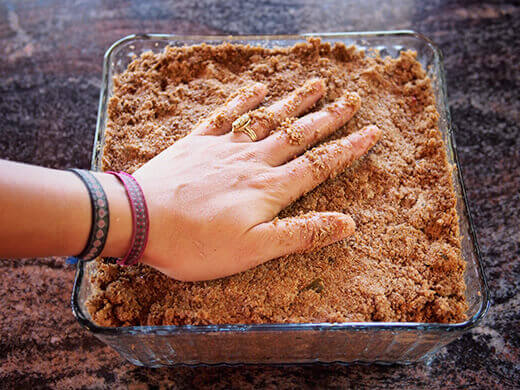
Cover the container with a lid (left ajar), a thin towel, or a couple layers of cheesecloth and store at room temperature out of direct sunlight. As the nukadoko is a living, breathing thing, you want to allow plenty of air flow for the bacteria to do their work.
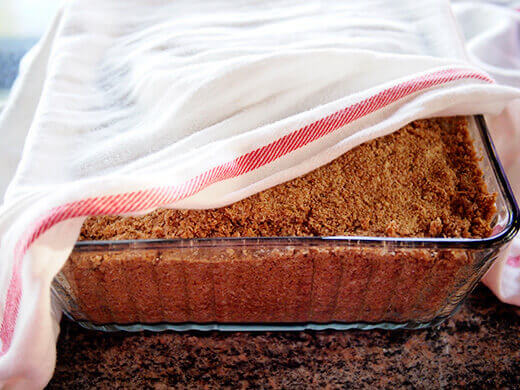
The next day, scoop up and turn over the bran with your hands a few times (from the bottom up) to aerate it. If it’s summertime or your room temperature is very warm, turn the bran twice a day (once in the morning and once in the evening). Do this every day for as long as you have your nukadoko.
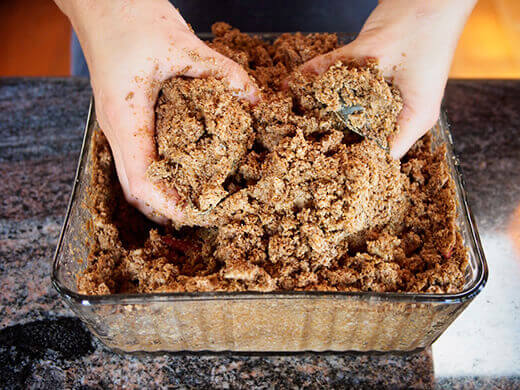
After two days, remove the vegetables from the nukadoko and brush off the excess bran. As the bed hasn’t fully fermented yet, the vegetables will be very salty. They’re not likely to taste great on their own, but they won’t harm you either. Eat them if you wish, or simply compost them.
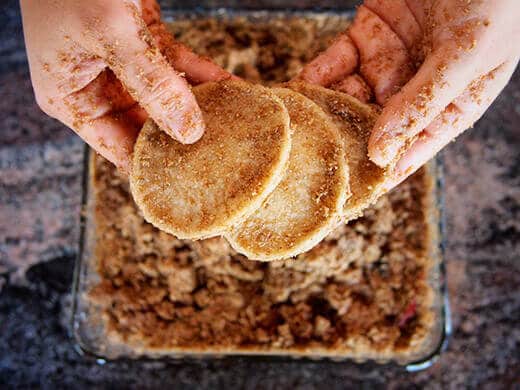
Add new starter vegetables to the nukadoko and replace them again in two days. Continue using starter vegetables for two weeks until the nukadoko develops a rich, earthy scent. Taste each batch of starter vegetables that you remove so you get a feel for how the nukadoko changes as it ferments.
After two weeks, the nukadoko should be microbially active enough to produce proper pickles. You can start to leave your vegetables in the nukadoko overnight to start pickling them. If they still taste very salty, and not yet sour, leave them in for one or two more days to continue fermenting. As your nukadoko matures, you’ll be able to pickle smaller vegetables in two to four hours, and larger vegetables in six to eight hours (or overnight).


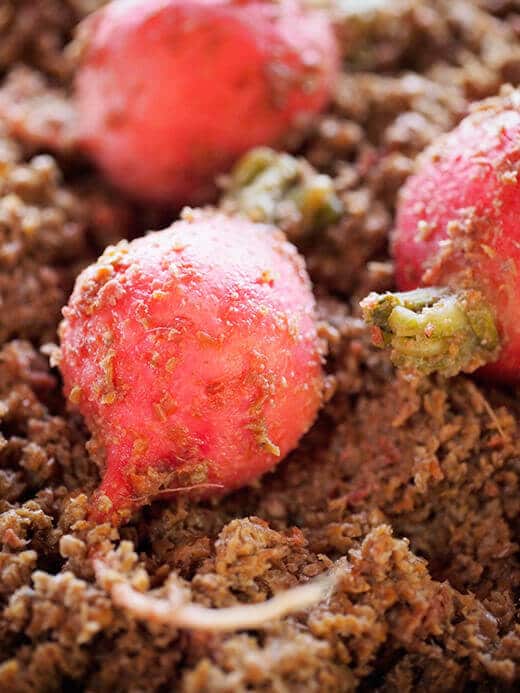













Thank you for this excellent course on Nuku pot fermentation:) I have an inherited pickle crock that I’m going to try. And I noticed for the piece of bread , you use sourdough?
Love the adventure, love the results!
I’ve actually used different kinds of bread for nukadoko and they’ve all worked fine!
years later, I’m trying this, best step-by-step I could find, thanks 🙂
All of my dried chiles are in packages that recommend cooking them first to avoid food-borne pathogens—are there any reasons to not use fresh chiles (mine are shishito) when starting the nuka?
Yes, you can use fresh chiles. Just keep in mind that shishitos can either be very mild or very hot.
my hukadoko is feeling warm to the touch on the 7th day. Is it normal? I used the oatbran recipe found on Noma’s blog.
Yes, it’s a living organism so it will give off some warmth.
Very much looking forward to starting my own nukadoko bed—wonderful posting—thank you! Are there any vegetables that are not recommended for fermenting? (I did see the Japanese eggplant discussion, so I’ll avoid eggplant…)
Hmm, it’s hard to say because I only ferment things that I enjoy eating pickled, so I stick to things like cucumbers, turnips, carrots, cabbage, radishes, mild peppers… I suppose I would avoid anything too pungent, like onions or perhaps celery, that could transfer a strong flavor or smell to the nuka. (But I haven’t tried either, so I’m just guessing.)
thank you for the pictures and recipe-very helpful. FYI-getting very nice organic rice bran from Rhapsody Natural Foods in Vermont.
Thank you for sharing that tip! Happy fermenting!
Hi Linda! great post, thanks for sharing.
Months ago I tried to prepare nukadoko. I read another post, not yours…sorry for that! 🙂 and I follow all steps, mainly same than yours. After a couple of days, I had my nuka bed inside de fridge, I realized that it seems appears some little white balls/eggs I am not sure what they were. The nuka bed doesn’t smells bad at all, but as it was my first time I decided throw it into the trash. I do not know if it is normal or if it is possible that this white balls appears so quickly. I also remember put inside the nukadoko a lot of ginger, garlic and chiles. Do you think is was possible that they were eggs warms? Have you ever happens you? Is it necessary warm the new nuka when it is needed? or simply add a bunch of rice brand.
Just today I am trying again to prepare it, let me know how is going on!
thanks in advance!
Without seeing pictures and knowing how you prepped the nuka, I can’t really guess what those little white balls were. I suggest following my instructions step by step in this post, and reading some of the troubleshooting tips, to help prepare your new batch. Good luck!
Hi Linda, I have been wanting to try to make nukatsuke. Then, I ran into this very old post on your blog, so I started my nukadoko a few days ago. The step-by-step pictures are very helpful. One question. Do you ever take out the konbu, garlic and chili or replace them?
I don’t take out the seasonings, and only add more when I add more nuka (as needed).
Hello I tried making the nukadoko with wheat bran and I’m starting to form mold at the second day. I put around 4 cups of water because i Was trying to form sand. I stoped at 4 cups because if I squeeze it water started to come out is that too much water. I’m thinking about starting over but I can only find wheat bran around me what should I look for when to stop adding water sense it doesn’t really look like sand.
Wheat bran is what I normally use if rice bran isn’t available, and it’s what is shown in the photos. The water measurement (which is listed at 3 cups in the recipe) is only a guide, and you are correct in that you don’t want to be able to squeeze the water out of the bran mixture with your hands — that would indicate it’s too wet. You want the mixture to be damp; the bran should hold its shape (and not crumble apart) if you squeeze it into a tight ball, but not be dripping with water. You can either start over, or simply add more wheat bran and salt to balance the water. (Use 13 percent salt by weight of the bran.)
That is the Texture I was trying to get but the wheat bran was not sticking together. One of the reasons why I thought this was the problem is because my wheat bran looks more like flanks not a powder. Is that normal for wheat bran or should I put it in the food processor and try to get it more like powder?
Wheat bran has a flakier texture than rice bran, but it still sticks together when damp. Use your hands to work the water evenly throughout the bran and make sure it’s fully absorbed. Your wheat bran bed should look like mine in the photos.
I was able to buy a 50 pound bag of raw rice bran from my local agricultural cooperative that sells animal feed,
fertilizer, etc. for just under $10. I think that comes out to about 20 cents a pound. They sell a 50 pound bag of wheat bran for just under $20. So far I am very happy with how things are going with my nukadoko and the pickles being produced. I am using the rice bran for my nukadoko.
Hello Linda! Thank you for this article and all the answers to the comments!
We started our nukadoko about a month ago. It’s coming along nicely, deliciously!
The question I have, and I didn’t see it in the comments , our nukadoko go is puffing up. Like bread rising. Smells fine, taste fine. Maybe a little saltier tasting than did last week.
Is this normal? Do you think there’s anything I should do?
It’s probably just part of it being new …
Thanks!
Star
Hello, and thank you! I have a question. Our nukadoko is about a month old. The veggies taste good! Yesterday, the nuka seemed puffy, like it is rising. Like bread. Is this right? Should I do anything?
I stirred it and changed out the vegetables, and today, it still seems puffy.
Thanks!!!
Star
Since the nukadoko is alive with yeasts and bacteria, the puffiness sounds normal. Perhaps it’s due to a sudden change in temperature? As long as it doesn’t smell off, it should be fine. Just be sure to stir it up every day and keep it stored at a moderate room temperature.
Hi Linda
I’m about 3-4 weeks into prepping my nukadoko bed. I’ve mainly used a different recipe to put it together but used your salt/bran ratio. Essentially I think it is the same, the main difference being I used beer instead of a slice of bread. Also less salt as per your ratio. It does indeed have a very strange smell, I can’t say rotten or sour but quite peculiar – since I was making it in a plastic tub I was wondering if that might have some effect and I have transferred it to a glass bowl now. Also it is quite wet but not yet any liquid pooling at the bottom. I’ve done all kinds of pickling – misodoko, sauerkrauts mainly, so I’m pretty confident that if it was really “off” smelling I would realise. I’m using wheat bran by the way, impossible to find rice bran unfortunately. I guess I just want to know if I should persist with it smelling this intense, I don’t know how to explain the smell! I’ve put some veggies in to see how it will come out, up to now I was mostly feeding it scraps to prepare it, so i guess that will be the test…
As long as your nuka bed doesn’t smell rotten (like rotten eggs), I think you can wait a bit longer to see how the fermentation progresses, and continue to aerate it each day with your (freshly washed) hands. Mine started with a very earthy smell, almost like mulch. Keep in mind that the aromatics you use in your bed (seaweed, ginger, chiles, etc.) can affect how it smells, as can the starter vegetables you put in it. Generally, I start with mild vegetables before fermenting something with a stronger smell/taste.
Hi Linda
Finally I decided to rather ditch that one, it really did start to smell weird and the veg had a nasty aftertaste. So I started from scratch following your recipe this time, so far so good…
Linda,
This is an amazing post and great project. I tried this once a couple years ago and everything was too salty tasting and finally just got moldy. I’m trying this again with renewed vigor. I’m inspired by your blog and will succeed at nukadoko!
I would recommend starting fresh for easier troubleshooting, though you can certainly try if you want to speed up the fermentation process.
Thank you for this great post! I just set up my first nukadoko bed today. It’s much stickier than I anticipated — kind of like play-doh. I thought it would be looser. The bran seems much more finely ground than in your pictures (I think you used wheat and I used rice so maybe that’s it). Is it normal to be able to pick up a formed ball of the nukadoko? It’s almost the consistency of a ball of masa ready to make tortillas…
Is that normal, or did I use the wrong kind of bran or too much water, or something?
Thanks again!
The texture sounds perfect. I equate it to picking up a handful of damp sand – it should stick together, but not be dripping wet.
Hi Linda,
Thank you very much for this informative post about nukadoko. I am crazy about the pickles (mostly daikon but I’m now fermenting some Persian cucumbers as you recommended). I kept a bed going for about eight months but had to throw it out during the summer when I guess it got too hot. It became very foul smelling (like acetone plus some kind of rotten smell). So now I’ve just started a new bed and it seems to be progressing OK. My question is about the cover. I have a plastic cover that fits on top of my container which makes the bed airtight. Should I not cover it all day with the airtight plastic cover? Would it be better to leave the bed covered with a tea towel or some other cloth that will allow air to circulate in the bed? Also, I have found that the bran tends to get too soggy over time. I know you said to soak up the excess moisture with paper towels which I have done but I wondered if you or any other commenters know of a better way to get rid of excess moisture. I’ve tried pressing the bran in a tea towel and that actually does remove a lot of the moisture but it is kind of messy. Any ideas?
You want a non-airtight cover, so a tea towel or similar works best to allow the nukadoko to breathe. As for the wetness, you can try mixing in more bran and salt to soak up the excess moisture (this will, of course, increase the volume so make sure you have enough space in your container to do so).
Hi Linda, my new nukadoko is giving me great tasting cucumbers, carrots and daikon. Then yesterday I buried a Japanese eggplant; today 24 hours later, I dug it up. The bed now has this raw eggplant juice smell and a smell that reminds me of the rubber band-aids from the 1960s. My hands are clean (I make sure they don’t have any lotion when I mix). I’m going to toss the eggplant (it was still firm, but the color was almost all gone and it looked mostly white). I have a really hard time with the smell. The bed itself feels fermented still and not bad; just that raw eggplant smell + rubber smell. Has this happened to you before? Or anybody has a suggestion on how to fix? Thanks for your help.
Hubby also confirmed it had a “rubber” like smell. A couple of hours later, the first sections of my fingers of my right hand swelled up like light bulbs !!! Apparently I’m allergic to eggplants and I’m allergic to rubber. The whole batch has to be tossed. I’ll have to start over again.
Oh my, I’m glad to hear you found out what it was!
I haven’t fermented eggplant but you can keep fermenting your other vegetables and see if the smell transfers to them (perhaps try the ends and scraps from mild-flavored vegetables first). Over time, the smell may dissipate.
can you just boil the bran and add salt then let the excess water evaporate as it cooks? i just bought wheat bran
You don’t want to cook the bran, you only want to toast it lightly.
i just toasted it in my microwave oven mixing it every couple minutes until they turned a little brown (5-10mins total)
have you tried using sourkraut brine/liquid instead of water to speed up the fermentation of the bran?
The only starter I use in my nukadoko is a cupful of nuka from a previous bed (if I want to start over with a fresh bed).
Thank you so much, this is THE great and complete article I have been searching on the topic. I started mine (with a ready made pack), in France, a couple weeks ago. That was a reasonable first step for me. But I had the wrong idea to store it in the fridge. It pickles though and the taste starts to be nice. I just started to store it in the kitchen. Will it be ok or do I need to do something to make it happy…?
Without knowing what your nukadoko is doing, my suggestion is to keep fermenting vegetables in it unless it starts to become too wet, smell rotten, or produce off-tasting pickles.
Hi ! Thanks so much for the blog , I am from the UK but living in Japan and I love trying out traditional Japanese stuff. I started my nukadoko yesterday but it seemed a bit dry when I turned it this morning. Is it ok to add a little water at any time ?
Yes, add as much water as needed for the mixture to feel like damp (but not wet, watery) sand in your hands.
Mike C Podlesny liked this on Facebook.
Sybil Smith liked this on Facebook.
Anne Casillas liked this on Facebook.
Amy Goo liked this on Facebook.
Hi… I have a 750gr. bag of wheat bran, and have calculated an amount of salt equalling between 95.5 gr and 105gr. It’s the water that gets me. your cup sizes defeat me, but the cup sizes I have here (I’m in the UK) are about 250ml. would that be about right? I can probably use slightly less, but that would make an equal quantity of cup VOLUME of water, to the VOLUME of wheat bran…. I will use 600ml of water in which to dissolve the salt, and then add more, if I need it, while mixing…. I’ll let you know how I get on. I am such an avid fan of pickling in general, that this is just one more exciting thing to try…
I don’t have the ingredients on hand to weigh myself, but you can simply add just enough water so the mixture has the consistency of wet sand – damp with no dry pockets, but not so wet that you can see water pooling in the bowl.
Use a small amount of water to dissolve the salt at first, mix that in to your nuka, then add more water as needed.
Good luck with it!
Yes, I have to admit, I threw caution to the wind, and just went by personal experience/instinct – and the mix is so much like damp sand, it’s quite an accurate comparison! It’s quite springy, because the bran is quite coarsely-shredded…. but I packed it down more firmly, as you suggested, and so far, so good… an ‘oaty’ warm, quasi-bread-baking aroma… and yes, the starter vegetables are far too salty, yet not unpleasant, either….
I shall keep going, and turn every other day, and turn-and-change vegetables every other day… until the 2 weeks are up. I’m observing the change in texture and feel, smell and consistency. What an interesting process. Such a great learning curve!
Incidentally, there are many recipes for Nukadoko on line, but I have to say, yours is the most user-friendly, authentic and enticing one I have come across! Well done!
Thank you! Enjoy your nuka bed!
Hey Linda, sorry to bother you… it’s me again! Ok, recap: I made the original batch of Nuka on the 20th August. I religiously followed your instructions, and turned the mix daily, changing the vegetables therein, every other day. On the 30th, I added more mix (according to mix instructions, salt/water ratio followed to the letter) to increase the amount of nuka… I really hadn’t made enough in the first batch, even for just myself!) Obviously, this set back the maturing process, but I persevered, and continued mixing daily, and doing the vegetable bit, as above… Now the mix does look very much like yours. Quite thick, crumbly, but with a ‘stickiness’ that clings to everything….! I judiciously wipe off the vegetables, carefully conserving the bran, and have in fact, on one occasion, laid a square of paper kitchen towel on the nuka, to absorb excess moisture. it worked… the mix is mildly warm as i begin to mix it – I gather this is the fermentation process? But even after all this time now, the vegetables don’t taste ‘pickled’ but are still quite salty…. Any comments? SHOULD they taste differently? is it because I’m still maturing the Nuka? How long would you think I should give it before I try pickling vegetables for consumption? (I just ate a nice big chunk of cabbage heart – crunchy and delicious – but quite salty! As I’ve never tasted nukadoko pickles before, not really sure what kind of flavour I’m looking for!
Sorry to bother you again – But as you can tell, I’m a very avid pickler!!
Since you added fresh nuka only 9 days ago, the bed still has a little while to go before it’s matured. Keep adding starter vegetables, tasting them, and noting the differences in flavor with each passing week. You will know when the nuka’s ready – the vegetables will be sour rather than salty, just like a true pickle.
If ever there was a true lesson in patience….! I can’t WAIT for the day when….! Thanks for your advice!
Ok, I’m just about ready to give this up as an experiment gone wrong. The nuka has much decreased in quantity – but it’s through compaction. It’s sticky and feels like clay, rather than wet sand… it’s much darker than when it started out, and everything is just plain salty. The smell is oaty, and there’s no mould, offensive smell, smell of alcohol… just sticky, brown claggy wheat bran and salt. What on earth is happening? Or rather, NOT happening?
The nuka is so dense and compacted, it’s getting hard to bury anything under it, it’s so reduced in volume. This would mean adding more bran/salt – but dammit, that would set the pickling process back even more! And it’s been WEEKS!! Any ideas – ?!
As long as your nuka smells pleasant, you’re still on the right track. The compaction might be happening because you’re patting the mixture down too firmly. “Fluff” it up with your hands when you’re stirring it each day, and just lightly pat it back into place so that the surface is flat.
Your nuka might be absorbing a lot of extra moisture from your starter vegetables, but that’s not necessarily a bad thing. You can try to counteract this by adding a small amount of bran to allow the bed to “breathe,” if that makes sense. The change in color sounds normal as well.
At this point, I would NOT add more salt, since too much salt can hinder fermentation. Also keep in mind that if your ambient room temperature is relatively cool, the initial fermentation will take longer. The beauty (or challenge? lol) of a nukadoko is in cultivating what’s essentially a living organism… each one is different and grows as its own pace.
Don’t give up!! 😉
I’m going to start my nukadoko bed today! We joined a CSA this summer and are getting tons of great veggies that would make great pickles. I watched an episode of Japanology Plus (From NHK World) on tsukemono and a woman they interviewed had a nukadoko bed that belonged to her grandmother! It had been handed down to her mom and then to her and was over 100 years old. I bet it makes awesome pickles. Can’t wait to try this!
A 100-year-old nukadoko sounds amazing! Talk about a family heirloom – and a living one, at that!
hello. this topic is so useful. thank you very much for posting
You’re welcome!
Hey Lindy. Just heard about nuka pickles for the first time yesterday after reading Sandor Katz waxing lyrical about them. This led me to your blog and what a blog. Very informative! I got my first bed started today and already counting down to 2 weeks. Just one question though…how long do you think the pickles would keep once out of the nuka and into the fridge. Would making a simple light brine help extend their shelf life do you think? I ask because I work as a chef and would want to make quite a lot of these
Thanks in advance
Ed
Nuka pickles are best eaten the same day, but I’ve kept cucumbers in the fridge for about three days. I don’t recommend storing them for any longer than that; the texture and flavor deteriorates quickly. It’s best to bury the vegetables every night so you have them fresh the next morning.
What a fantastic discussion! Great pictures as well. I’m enjoying carrots from my nuka bed almost every day; nothing quite tastes like that nukamiso tang. Thanks for putting this together.
You’re welcome!
Thanks Linda for your thorough explanations and pictures! I’m on a fermenting kick. I remembered the rice bran pickles I had when I lived as a kid in Japan. I set up my own little nukadoko in a vintage Pyrex casserole. I’m hoping turning it twice a day will keep it happy 🙂
Twice a day in summer is a good call, but as the weather turns cooler, you can stir just once a day. Our temperatures have shifted recently and I’ve noticed a significant change in how my nuka smells and feels. It’s a fascinating process!
Hello!
Thank you very much for sharing with us your experience with the nukadoko. For me personally I’m finding it very helpful and very informative on my first try with these pickles.
I have little doubt that I would ask, when the time to add new nuka to bed (to replace what has been lost gradually) comes, should we toast the new nuka or we can incorporated they “raw”? Perhaps it’s very obvious, but I have not been able to find answer.
¡A lot of thanks!
You should toast the nuka and go through the same process as if you were mixing a new bed. (Eventually you may want to replace or add more dried chiles, kombu, garlic, and/or ginger as well… since every bed develops differently, this would be at your own discretion.)
I see.
¡A lot of thanks! 😀
I read about this first in Coyne and Knutzen’s Making It, and had a bed for several weeks, but as one person living alone I just didn’t use it enough to really make it worth the effort. Unfortunate – the pickles were delicious! I plan to pick it back up someday.
Maybe you could make a smaller bed? Mine feeds 2 people, and is just enough to fit 3 baby cucumbers in it. If the hubby didn’t like pickles, I’d probably only maintain a bed half the size.
This is so fascinating! I tried miso pickling (a lot easier) after reading Asian Pickles by Karen Solomon, but admit I was a little intimidated by the bran picking–so thank you for the detailed description.
I started my rice bran pickling by using a nukadoko kit from the Japanese market first. Once I got the hang of it, I kept adding more bran until I decided to make a bigger bed from scratch. It seems labor- and time-intensive at first, but is pretty straightforward once you get your bed going. I highly recommend it if you’re interested in Asian pickles!
Hi Linda, I just bought a nukadoko kit in Mitsuwa market, and added the kombu, garlic and chili. How long do I leave the kombu, garlic and chili in the bed for flavoring? Do I wait until the kombu turns slimy or it will dissolve into the bed? Thank you for your help.
You leave them in the nukadoko permanently. They’ll break down over time and get removed bit by bit with the fermented vegetables, so you may want to re-flavor the nuka from time to time (like when you need to add more nuka).
Thank you !!!
Japanese rice bran pickles are good for your gut. How to Make Nukadoko (Fermented Rice Bran Bed) for Pickling http://t.co/MIOF22Flao #recipe
A guide to homemade nukazuke (Japanese pickles): How to Make Nukadoko (Fermented Rice Bran Bed) for Pickling http://t.co/UsjSfRQTOA #recipe
Make probiotic-filled pickles in mere hours. How to Make Nukadoko (Fermented Rice Bran Bed) for Pickling http://t.co/YfIehlmRyJ #recipe
Making it from scratch is a deeply satisfying meditation. How to Make Nukadoko (Fermented Rice Bran Bed) for Pickling http://t.co/zVXDQBX7Ay
Kraut, check. Kimchi, check. Nukazuke is next! How to Make Nukadoko (Fermented Rice Bran Bed) for Pickling http://t.co/GeU57bdlAC #recipe
Blogged on Garden Betty: How to Make Nukadoko (Fermented Rice Bran Bed) for Pickling http://t.co/RFYUf4wDKQ